
I waited until the witching hour, but I finally managed to bake the Halloween cookies I've been planning all month.
Not that I haven't been baking. I've churned out several loaves of bread (two this past week alone), a couple batches of muffins, and two dozen carrot cupcakes with pumpkin-hued cream cheese frosting to get us in the Halloween mood.
Mmm. Carrot cake. Aaaauuughhhhh.
Anyway, I decided that Halloween demanded dark chocolate cookies, especially since I'd already gone the fall-spice route with the cupcakes. Preferably, cookies made from a recipe calling for Dutch-process cocoa, which produces baked goods as black as my wicked heart.
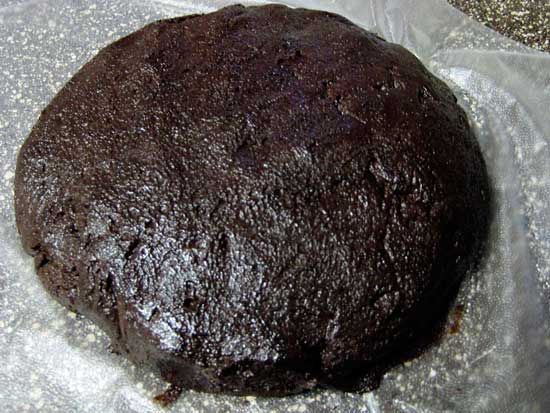
And black my heart felt after struggling fiercely with this extremely soft dough. I chilled it for three hours, which was the minimum suggested, but I doubt a longer rest would have helped matters. Maybe a nice marble gravestone to roll on . . .
I heavily floured the countertop, as instructed, but the cookies sucked it up like vampires at a blood bank. I managed to get three cookies off the counter without resorting to my bench scraper. The rest got reformed into circles on the baking sheet.
Next, I tried patting the dough out straight onto the cookie sheet with my hands, punching out the cookies and pulling off the excess. That method worked all right, but the dough still stuck the rolling pin and it was a pain to peel up the excess.
I tried slicing a log of dough, but the soft dough squished into little rectangles. I couldn't slice it thin enough, either. Still, this method yielded some success when I rolled the cut dough into balls, placed them on the cookie sheets, and pressed them flat with a greased glass bottom.
I cast a spell on you, recipe, and now you're mine!
A ghost of a problem: The flattened cookies turned out bigger than the 2-1/4 inches called for in the recipe, so I only ended up with 53 cookies, far from eight to nine dozen. I never hit the recipe yield right, though, so no big deal.

The cookies taste a lot like slightly soft Oreos, appropriate since one of the variations calls for sandwiching them around a creamy filling. If you love the classic lunchbox cookie, you'll enjoy these.
I usually avoid roll-out cookies (and pie dough) because of these hassles. They're the monsters under my baking bed; the boogeymen in my cookie closet. But tonight, I persevered and triumphed; the brains of Frankenstein combined with the cunning of the Wolfman pulled me through the ordeal.
Happy Halloween!
My comments in [brackets]. Chocolate Snaps
Chocolate SnapsSource:
King Arthur Flour Cookie Companion: The Essential Cookie Cookbook
Yield: 8 to 9 dozen cookies [I ended up with 53 cookies]
1-1/2 cups (6-1/4 ounces) unbleached all-purpose flour
3/4 cup (2-1/4 ounces) Dutch-process cocoa powder [natural cocoa is given as a possible substitution, but your cookies will turn out reddish rather than blackish]
1/2 teaspoon salt
1/2 teaspoon baking powder
3/4 cup (1-1/2 sticks, 6 ounces) unsalted butter
1 cup plus 2 tablespoons (8 ounce) sugar
1 large egg
1 tablespoon water
1 teaspoon vanilla extract
1. In a medium-sized mixing bowl, whisk together the flour, cocoa, salt, and baking powder, whisking until no lumps remain. In a separate, larger bowl, beat the butter until light. Add the sugar and continue beating until it's well incorporated. Then add the egg, water, and vanilla and beat for at least 2 minutes, until the mixture has lightened both in color and texture. [The change is dramatic.] Gently mix in the dry ingredients.
2. Shape the dough into a flattened disk. Wrap in plastic wrap and refrigerate for 3 to 4 hours, or overnight. This dough is very soft, so it's imperative that it's been chilled before you roll it out.
3. Preheat the oven to 325 degrees F. Lightly grease (or line with parchment) two or three baking sheets. [Actually, if you rolled the cookie dough out on the parchment, transferred the paper to the sheet, cut the cookies, and removed the excess, that might work better than the coming step . . .]
4. On a clean, heavily floured work surface, roll the dough to a 1/8-inch thickness, and use a round cutter to cut it into 2-1/4-inch circles. Place the cookies on the prepared baking sheets. They won't expand a great deal, so you don't need a lot of space between them.
5. Bake the cookies for 17 to 18 minutes. (Watch them carefully; it's difficult to tell when they're done, as they're so dark you can't see if they're brown, but when you start to smell them they're probably done. If you smell even a whiff of scorching, remove them from the oven immediately.) Transfer the cookies to a rack and cool them completely.
Nutrition (1 cookie, 7 g): 30 calories, 1 g fat, 1 g protein, 2 g complex carbohydrates, 2 g sugar, 6 mg cholesterol, 14 mg sodium, 14 mg potassium, 14 RE vitamin A, 3 mg calcium, 8 mg phosphorus, 2 mg caffeine
Optional: Frost the cookies with orange-tinted Vanilla Yogurt Frosting for a spooky treat.
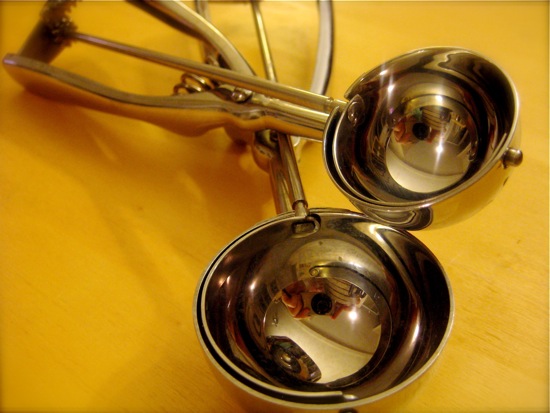
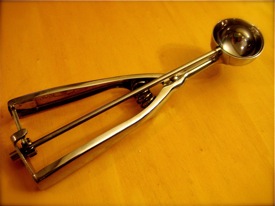
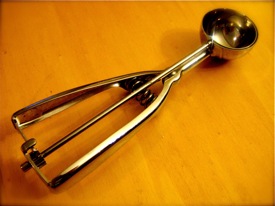
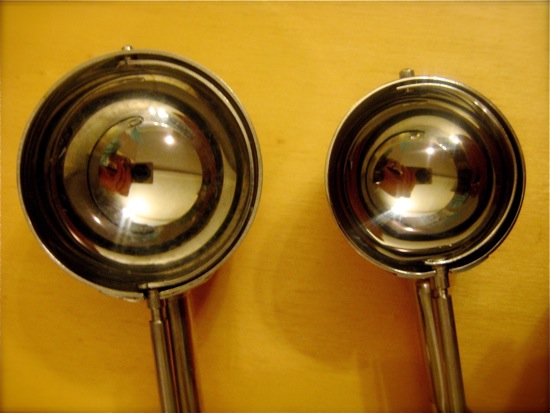


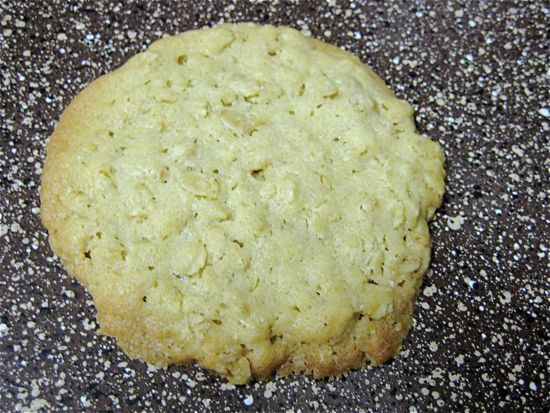
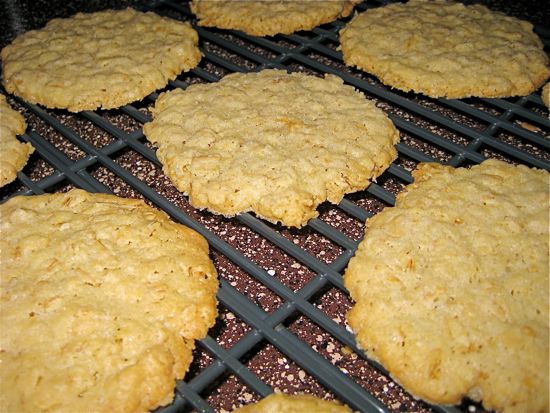
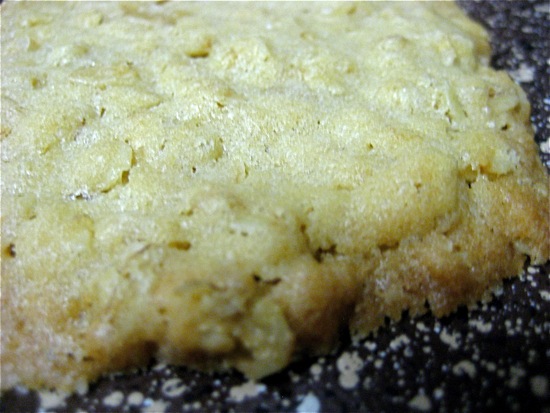
 Salty Oatmeal Cookies
Salty Oatmeal Cookies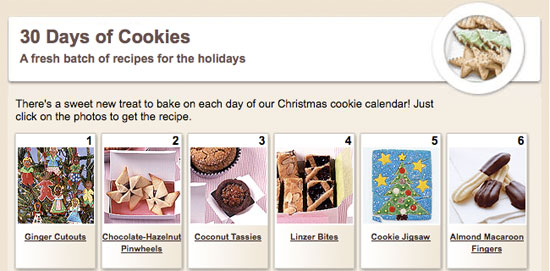
 In the meantime, here are links to the cookie recipes Paula Deen provided to Good Housekeeping for their feature on her family's holiday celebrations. Check out
In the meantime, here are links to the cookie recipes Paula Deen provided to Good Housekeeping for their feature on her family's holiday celebrations. Check out 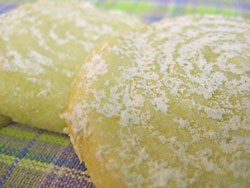 I own at least dozen cookbooks featuring cookie recipes. I subscribe to several magazines offering at least occasional cookie recipes. I also have the Internet and its vast cookie recipe collection at my disposal 24/7.
I own at least dozen cookbooks featuring cookie recipes. I subscribe to several magazines offering at least occasional cookie recipes. I also have the Internet and its vast cookie recipe collection at my disposal 24/7. One thing I have never done, though, is create my very own cookie. Sure, I've messed around with other people's recipes, swapping in different mix-ins or substituting one sugar or extract for another. I even once modified a standard chocolate chip cookie recipe to create double chocolate chip cookies.
One thing I have never done, though, is create my very own cookie. Sure, I've messed around with other people's recipes, swapping in different mix-ins or substituting one sugar or extract for another. I even once modified a standard chocolate chip cookie recipe to create double chocolate chip cookies. 



